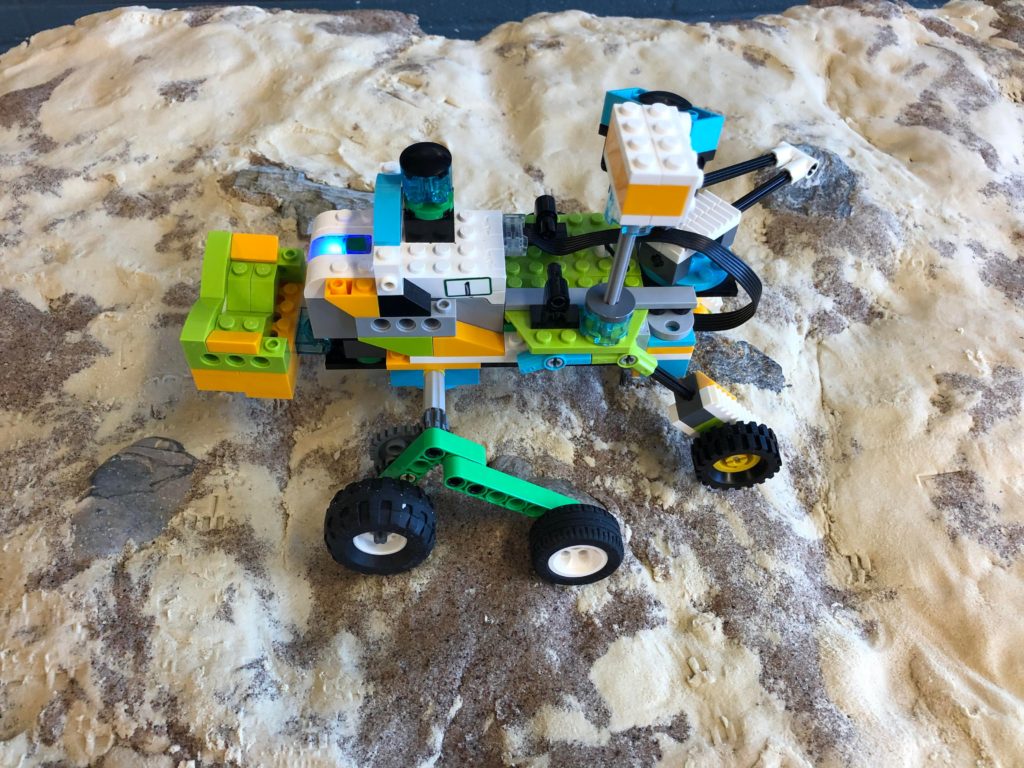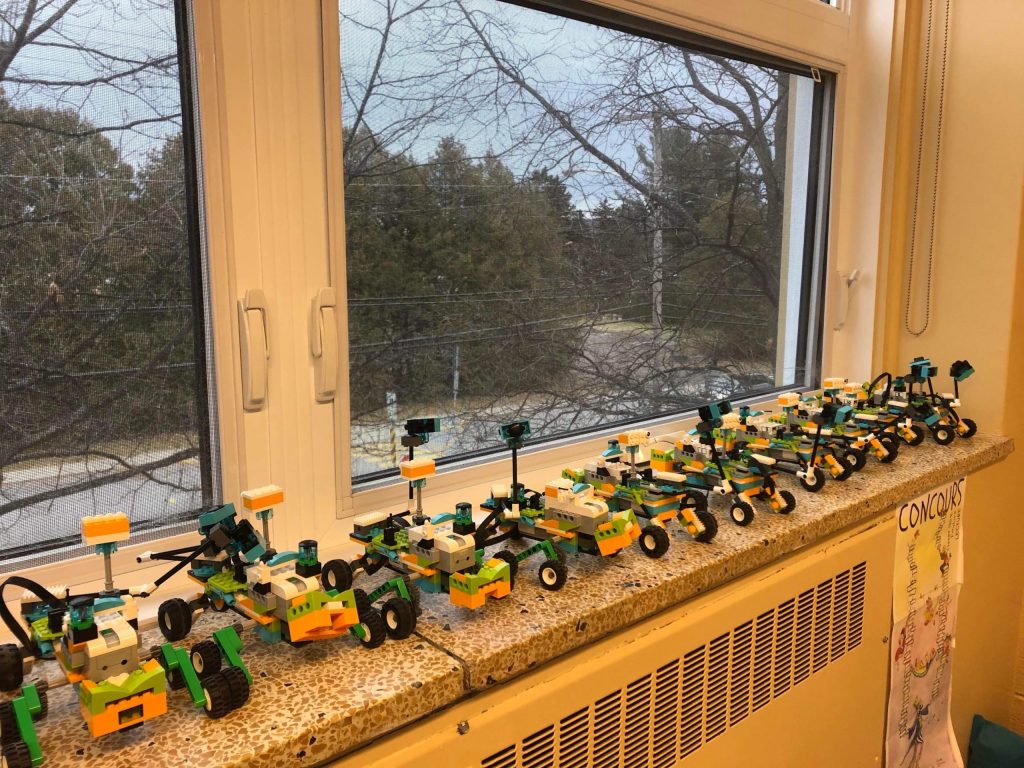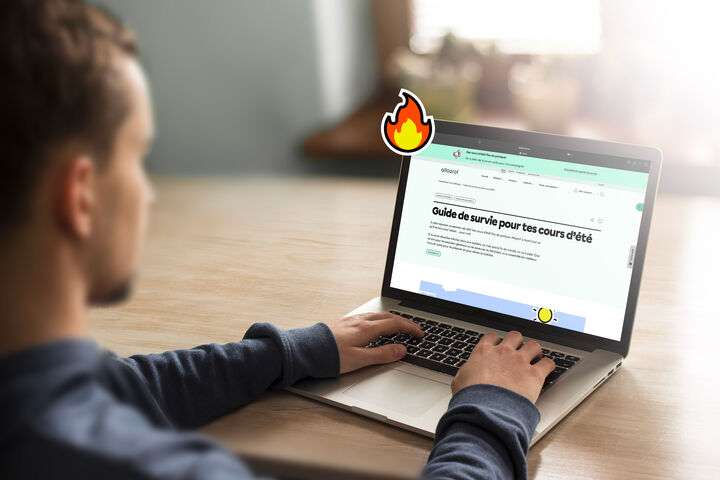Une plateforme de sable cinétique reproduisant la surface de la planète Mars est installée dans une salle de classe. Des élèves s’activent autour de leur reproduction du désormais célèbre robot Persévérance. Ils doivent trouver la bonne combinaison de roues pour pouvoir compléter la mission. Voilà le genre d’activité que Sébastien Bergeron fait vivre à des élèves du primaire du Centre de services scolaire des Bois-Francs (CSSBF).
Sébastien Bergeron est conseiller pédagogique en intégration du numérique au CSSBF. La robotique est une véritable passion pour lui et il souhaite la transmettre aux enseignants et aux élèves de sa région. « La robotique permet de créer des dynamiques de classe complètement différentes. Les élèves apprennent en s’amusant. Les enseignants peuvent accumuler bon nombre de traces d’apprentissage », dit-il.
À l’automne 2019, toutes les écoles primaires de son CSS avaient reçu des équipements de robotique. La pandémie de la COVID-19 a cependant freiné le déploiement et forcé la mise sur pause de plusieurs activités. Depuis l’automne 2021, Sébastien sent que les activités reprennent. « Les enseignants voient le potentiel. Ils ont besoin d’accompagnement pour se lancer et je suis là pour les aider. » Lorsqu’il se rend en classe, ces derniers ont d’ailleurs la possibilité de vivre les activités comme apprenant au même titre que leurs élèves. Cela leur permet de se familiariser avec le matériel.
Des plans de travail pour favoriser l’autonomie des élèves et la gestion de classe
Lorsqu’il prépare les activités qu’il propose aux classes, Sébastien les construit toujours sous forme de plan de travail que les élèves peuvent ensuite suivre à leur rythme. Des activités bonus sont aussi prévues pour ceux qui avancent plus rapidement. Cela facilite la gestion de classe et permet aussi de faire les liens avec le programme, de nommer les compétences à atteindre ainsi que ce qui sera évalué (en incluant les critères d’évaluation).
Il n’hésite pas à partager les plans de travail qu’il crée et qu’il a regroupés dans un Padlet. Certains ont même été traduits en anglais afin de répondre aux besoins des enseignants de 6e année qui ont des groupes d’anglais intensif. Ceux qui sont membres du groupe Facebook Les TIC en éducation sont probablement familiers avec ses publications.
Persévérance : une mission qui stimule la créativité et l’engagement des élèves
Pour créer la mission spatiale sur Mars, il s’est inspiré du plan de construction du robot Persévérance publié sur le site Robots Got Talents. Il a ensuite créé un premier plan de travail qui amène les élèves à s’intéresser à la mission, à nommer les pièces, à construire le robot et à lui faire faire quelques manœuvres en le programmant. Dans un deuxième plan de travail, les élèves doivent trouver la bonne combinaison de roues qui facilitera les déplacements de l’astromobile sur Mars.

À tout coup, il remarque que les élèves sont absorbés par la tâche. Il constate aussi un phénomène intéressant : « Certains élèves sont déboussolés par le fait qu’ils peuvent se mettre en mode créativité. Ils peuvent faire des essais, se tromper et recommencer. Ils ne sont pas habitués à cela ». D’un autre côté, ce type d’activité permet à des élèves de sortir de leur coquille. « Certains vont soudainement se mettre en action. Ils peuvent toucher, manipuler du matériel. Ils s’empressent d’aider leurs camarades. »
Sébastien Bergeron rêve du jour où les élèves vivront au moins une activité de programmation ou de robotique par cycle. En attendant, il multiplie les propositions auprès des enseignants et il accompagne tous ceux qui le contactent. Chacun a le potentiel de devenir un agent multiplicateur dans son milieu.
Pour consulter l’ensemble des ressources de robotique de Sébastien, c’est ici : https://padlet.com/srimcssbf/robotique
Tant qu’à y être, découvrez aussi notre guide d’activités SCOOP! gratuit : Farah Alibay à la conquête de Mars.
Surveillez enfin le prochain numéro du magazine École branchée, à paraître en avril. Il portera justement sur la programmation et la robotique à l’école.
Dimension(s) de la compétence numérique en lien avec cet article
2- Développer et mobiliser ses habiletés technologiques
5- Collaborer à l’aide du numérique
Voir le Cadre de référence.







